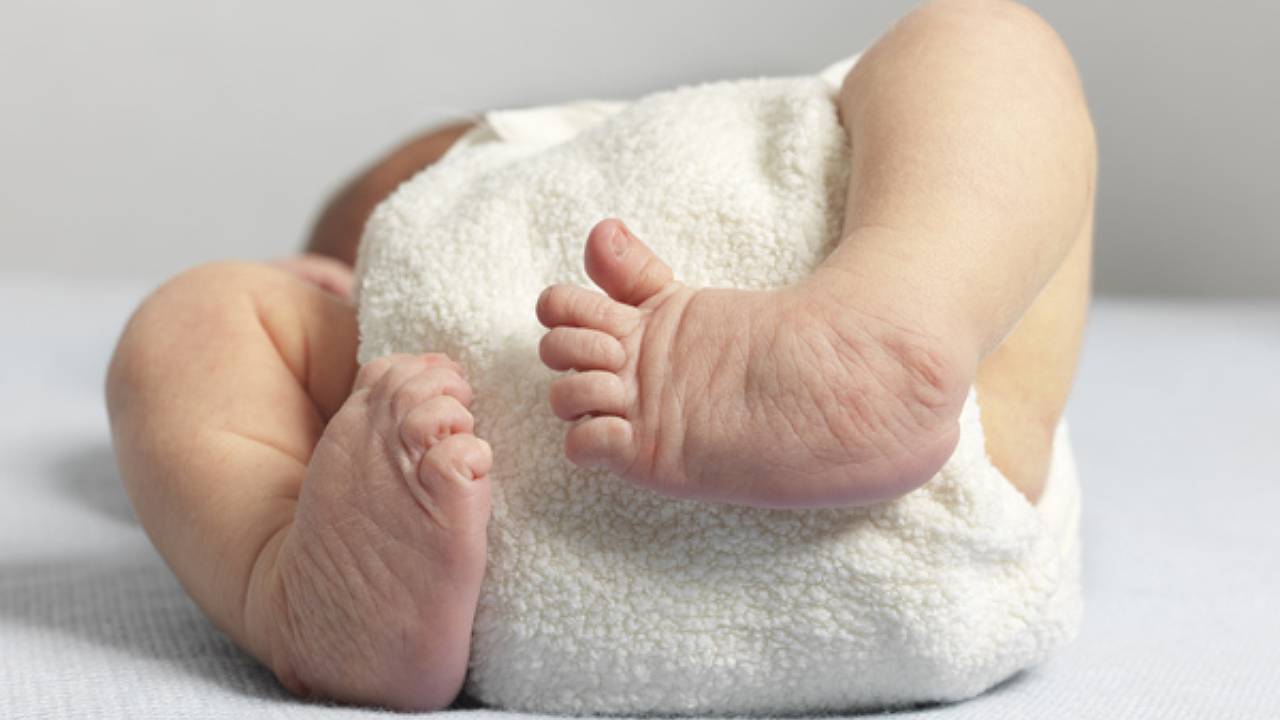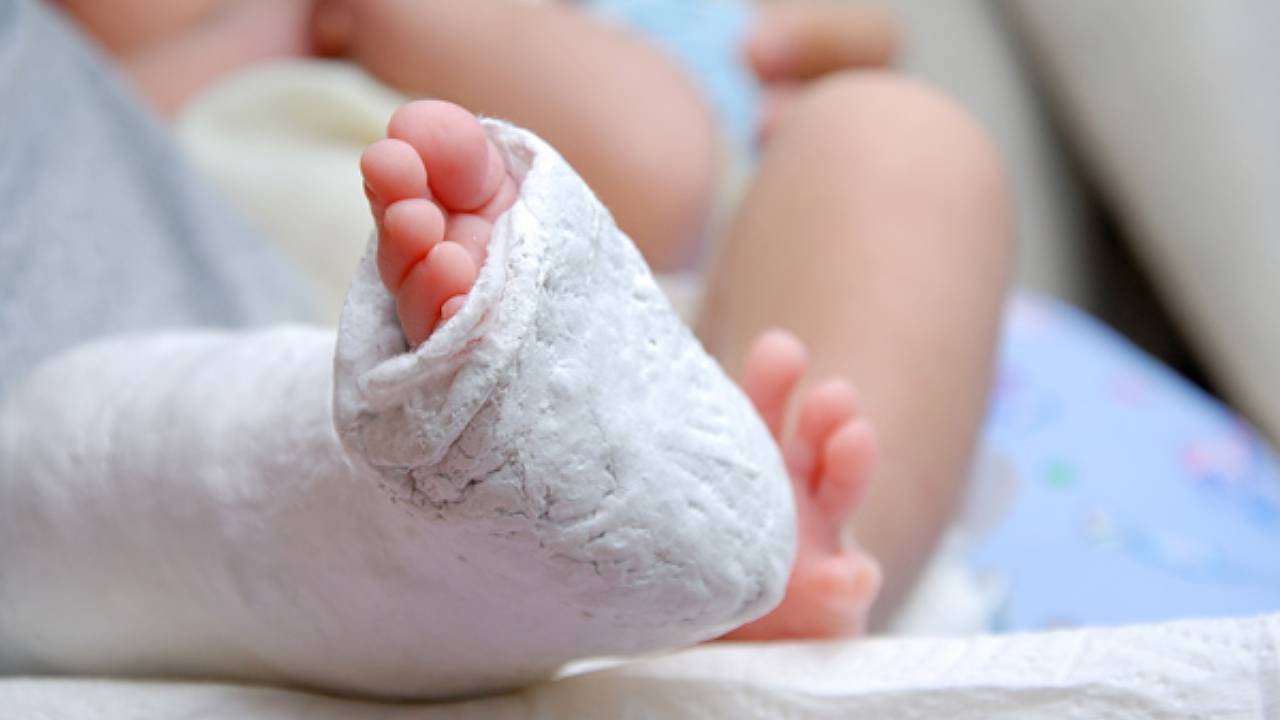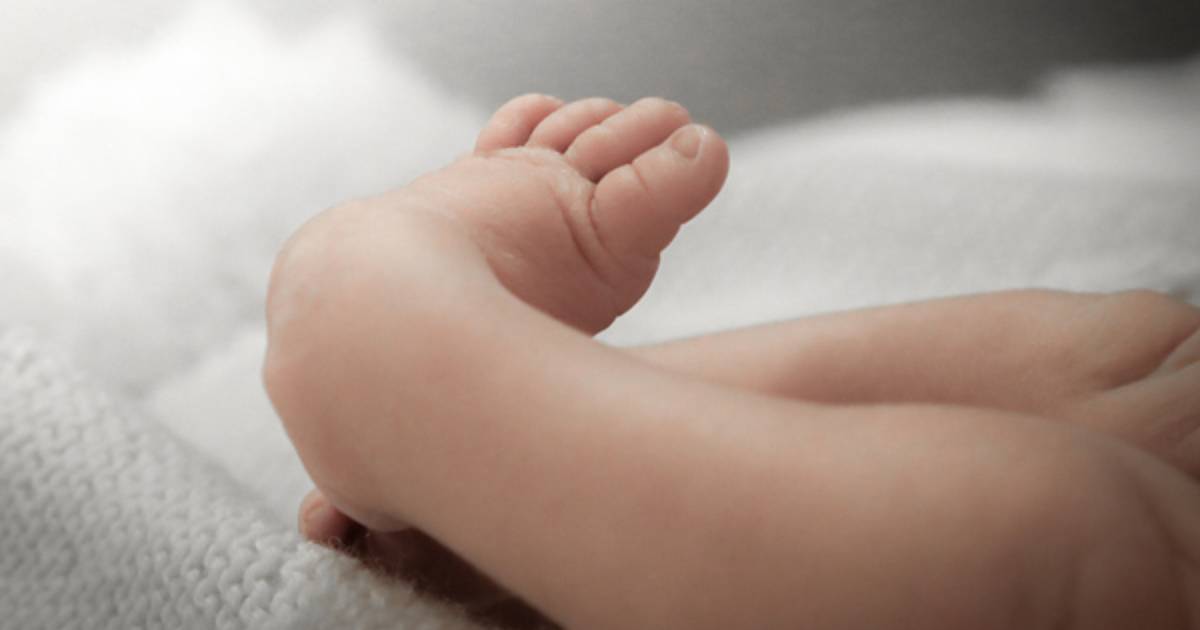Clubfoot is a congenital deformity found in infants and can be characterised by the inward twisting of the heel and toes. In some cases, clubfoot can be so severe that the sole is found facing sideways or even upwards. Statistically, 1 out of 1,000 children are born with clubfoot, and half of those cases will have it in both feet.1
Clubfoot can be diagnosed during a prenatal ultrasound around the 20th week of pregnancy or just after birth. As early intervention yields the best results, expectant parents often come into the clinic before the baby is born to discuss correction plans for clubfoot. Since the bones and joints of newborns are very flexible, interventions can begin in the first week of life.
Risk Factors for Clubfoot
While there is no definitive cause for clubfoot, there are several factors that can contribute to a child being born with this condition, such as:
- Being male
- Family history of clubfoot
- Smoking during pregnancy
- Congenital deformities associated with spinal defects such as spina bifida
- Other birth defects

Symptoms of Clubfoot
- The top of the foot is twisted downwards and inwards, and may be twisted to the point where the foot looks upside down
- If only one foot is affected, it may be up to 1cm shorter than the other limb due to underdeveloped muscles in the calves
In most infants, the presence of clubfoot itself is not painful but the condition will not improve on its own and can worsen and hinder mobility if left unaddressed. This can affect the child drastically in their adulthood where they will be unable to walk normally and may likely develop arthritis.
Eventually, patients will start to notice a formation of calluses from their abnormal gait, which can lead to skin breakdown, ulceration, and possibly infection. The most severe of unaddressed cases can also ultimately lead to amputation.

How Is Clubfoot Managed Through Podiatry?
Clubfoot management aims to restore full function, rectify pain, and resolve the presence of visual deformities. In the last decade, traditional surgical approaches have been pushed out in favour of conservative or minimally invasive podiatric care, which our podiatrists are highly confident in. Such approaches may involve:
- Examination, evaluation, and advice
- Progressive serial (weekly) rigid casting sessions
- Soft casting and splints
- Long term orthotics and ankle foot orthotics, or braces to prevent recurrence
- Specific footwear
The Ponseti method is a well-known, highly specialised approach that involves the gradual stretching and casting of the leg(s). The foot is first stretched and manipulated to a more ideal alignment before being cast from the toes up to the thigh. This process is repeated each week for around 6 – 8 weeks until a fully corrected position can be held.
After the casting is removed, your podiatrist may recommend ankle foot orthotics (AFO), bracing, and prescription insoles to ensure that the corrected alignment is maintained and to prevent relapses.
Visit your podiatrist to find out more about your child’s particular needs so that a customised plan can be prescribed as soon as possible. With early intervention and proper care, clubfoot can be managed effectively.
However, if your baby is unresponsive to podiatric care, surgery by an orthopaedic surgeon may be required to lengthen or reposition tendons and ligaments to allow for better realignment.
Frequently Asked Questions
If your child’s foot is displaying a “down and in” structure or you notice a deep crease in their foot, your child may have clubfoot. Seek a consultation with a podiatrist for a prompt diagnosis.
Clubfoot can be highlighted during inter-uterine scanning, especially during a routine ultrasound around week 20 of the pregnancy. A consultation with a podiatrist can be helpful for discussing possible strategies before the baby is born.
Podiatric intervention can and should be done as early as one to two weeks after birth. It is essential that the diagnosis is made in time and proper care is given as soon as possible.
If clubfoot is left unaddressed, a permanent rigid clubfoot deformity will remain as the child grows into adulthood, causing disability and leading to exclusion from activities among their peers.
Asymmetrical walking will lead to imbalanced biomechanics and unequal pressure points in the feet. These may eventually cause the formation of calluses and ulcers, which could lead to bone infection over time and may result in amputation. Your child must seek comprehensive care as soon as possible to prevent the start of these cascading events.
The age limit for casting is unclear but the ideal period for casting should start in the first few weeks after birth when the baby’s connective tissues are at their most malleable. In cases of delayed intervention and depending on the severity of your child’s clubfoot, long-term orthotics or ankle braces may be sufficient enough to assist with the correction of their feet. Our podiatrists specialise in designing small, intricate, corrective devices for such cases.
However, if the neglected clubfoot deformity has become too severe to manage conservatively, surgical intervention will be required once the patient has reached skeletal maturity.





